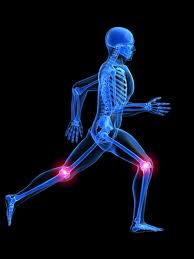The Olympic Games
It's that time again: The Summer Olympic Games, when the best athletes from all over the world compete for the title of the world's best! As an exercise physiologist and strength coach, it's truly an amazing spectacle to watch such displays of incredible athleticism and talent (unless you are watching ping pong, they're good don't get me wrong but maybe not what you think of when you hear Olympic Athlete). The drive for athletes to better themselves and improve performance is the basis for my field in the first place, so it's exciting to see the inspiration and reason for what we do!
History of The Olympics
Originally the Ancient Olympic Games were held in Olympia Greece, going back as far as the 8th Century BC! Some of the original games hosted events such as: running and jumping events, discus, javelin throw, boxing, wresting and some equestrian events. The majority of the competing athletes were from surrounding city-states that declared a temporary truce while the games were in session. The Olympics continued to be a popular event until sometime around ~400 AD when the Emperor put a stop to them. They weren't resumed until the 19th century! The games were continued again in 1890 when the International Olympic Committee (IOC) was established. The Winter Olympic Games weren't even established until 1921.

Politics, Performance Enhancing Drugs and Professionals
The 20 and 21st century molded the Olympic Games into what they are today. The Olympic Games have come along way from 241 participants representing 14 countries in 1896 to about 10,500 participants from 204 countries at the 2008 Summer Games. During this span, issues such as professional athletes competing, mass media and corporate sponsorship have had a huge impact on how the games are portrayed. There has been a lot of debate on whether or not professional athletes should be able to compete in the games. Personally I think the Olympic Games wouldn't be a competition of the world's best athletes without them! It has brought on challenges of athletes being forced to choose between their regular sport season or the Olympics but I think an athlete would be crazy to turn down a shot at Olympic gold.
There are also some major political issues that come into play with the Olympic Games. A lot of countries seem to associate winning medals with being a political powerhouse and therefore put a lot of pressure on their athletes to be the best in the world. This pressure actually led to a lot of the performance enhancing drug developments that seem to go hand in hand with today's sports. Some of the Eastern European countries were known to "recruit" athletes as a young age, pump them full of who-knows-what kind/amount of performance enhancing drugs, and send them out to settle for nothing but gold.
The 20 and 21st century molded the Olympic Games into what they are today. The Olympic Games have come along way from 241 participants representing 14 countries in 1896 to about 10,500 participants from 204 countries at the 2008 Summer Games. During this span, issues such as professional athletes competing, mass media and corporate sponsorship have had a huge impact on how the games are portrayed. There has been a lot of debate on whether or not professional athletes should be able to compete in the games. Personally I think the Olympic Games wouldn't be a competition of the world's best athletes without them! It has brought on challenges of athletes being forced to choose between their regular sport season or the Olympics but I think an athlete would be crazy to turn down a shot at Olympic gold.
There are also some major political issues that come into play with the Olympic Games. A lot of countries seem to associate winning medals with being a political powerhouse and therefore put a lot of pressure on their athletes to be the best in the world. This pressure actually led to a lot of the performance enhancing drug developments that seem to go hand in hand with today's sports. Some of the Eastern European countries were known to "recruit" athletes as a young age, pump them full of who-knows-what kind/amount of performance enhancing drugs, and send them out to settle for nothing but gold.
 g
g
The technological advances of recent, have brought with them issues of
corporate sponsorship, media rights and battles for advertisements. Watching the Olympics is now like watching a digital billboard. However, we can't complain too much because this has given us the ability to watch any event at any time. It's
just a shame that so many issues and conflicts have stolen the thunder from
the athletes and the reason for the Games in the first place.
Regardless of the negative issues, the Olympic Games are still an amazing spectacle and I highly recommend everyone watch them! Go watch your favorite country/team and find out how they're doing:
http://www.london2012.com/








